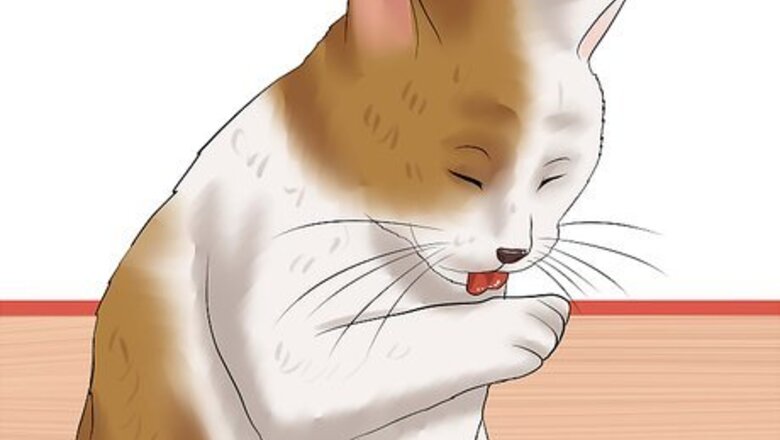
views
Assessing Your Cat's Symptoms

Pay attention to your cat's grooming. If your cat is sensitive to fleas, she may have an allergic reaction. Even cats that are not allergic to flea saliva experience irritation and itching from individual bites. This triggers excessive grooming behavior. Your cat may clean herself so often and thoroughly that she removes the fleas. It may be harder to spot the fleas since they hop on to the cat to feed and hop off again, so they only temporarily appear. This explains why your cat can have fleas even if you can't find them. Signs of flea infestation will be different depending on your cat's health, the number of fleas on the cat and other individual factors.
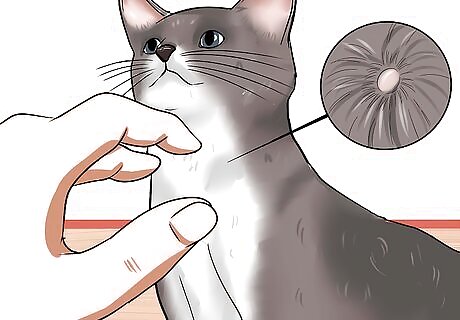
Look for flea symptoms. Flea bites are very irritating. Watch your cat for the following flea symptoms: small bumps or crusts, usually on the neck and along the back skin irritation, especially on the back of the neck and base of the tail increased scratching, especially around the face increased grooming hairballs from excessive grooming hair loss passing tapeworms in the stool (fleas carry tapeworm eggs which cats ingest and pass)

Pay attention to your cat's behavior. Your cat may suddenly avoid rooms she used to enjoy, especially if they're carpeted and are harboring fleas. Your cat might also appear restless or edgy. She may even start growling or shaking her head a lot. Your cat may be trying to get rid of the fleas. Some cats may be more sensitive to flea bites and will appear more bothered by the flea bites. They may develop strange behaviors because they are uncomfortable.
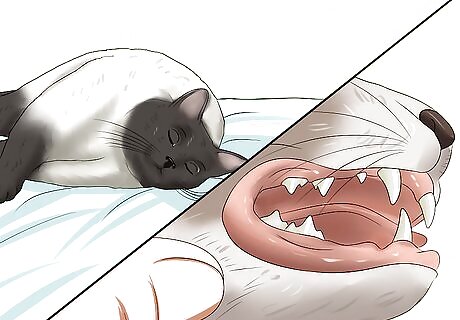
Watch for signs of anemia. If the flea infestation is really bad in your cat, not only will she have a lot of fleas in her coat, but she may suffer from blood loss and develop anemia. If so, look for lethargy or extreme tiredness, pale gums, and muscle loss. You should also check the flea dirt against a wet white towel to be sure of fleas. Regardless of whether your cat has fleas, you should take her to the vet if she's anemic. Kittens and elderly cats are more likely to get anemia from flea infestation.
Looking for Fleas on Your Cat
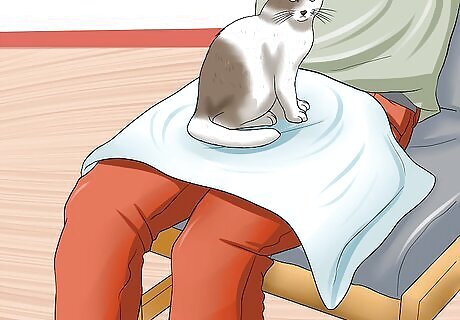
Secure your cat. Set your cat on a white sheet or pillowcase. The white fabric will let you see any fleas or flea dirt you might dislodge. If you want to hold the cat in your lap while combing, drape your lap with the cloth first. Fleas are dark brown wingless insects about 3 to 4 millimeters in length. You may notice them jump away as you work. Check in between the cat's legs on their bellies. Part the fur here as it is a common place for fleas to inhabit.
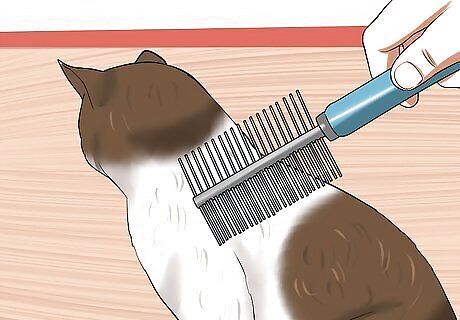
Comb your cat's fur. Comb the cat from head to tail with a flea comb and examine the fur and exposed skin as you work. Pay particular attention to the back of the neck, the base of the tail and the insides of the legs. These are favorite hiding spots of fleas. Flea combs are designed to trap fleas on the teeth of the comb. The teeth are so close together that the flea cannot escape and is brought to the surface.
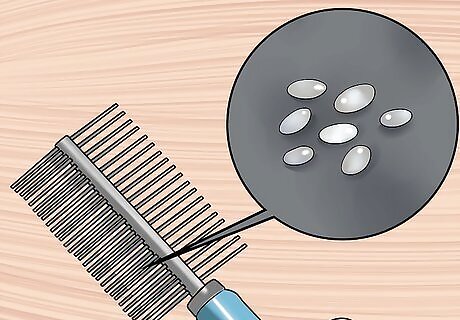
Examine the flea comb. Even if you don't find jumping fleas, you may find flea excrement or flea eggs, which look like salt and pepper. If you find any suspicious material, place it on a damp paper towel. Flea excrement contains blood, so it turns dark red when it gets wet. If you notice this flea excrement, or flea dirt, there are fleas somewhere on your cat.
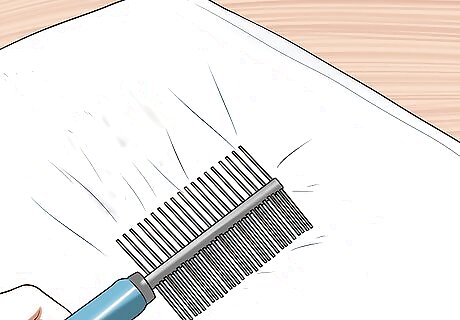
Check for flea feces or flea dirt. Shake the dirt from the comb and her fur onto the white sheet so you can see the black specks. To distinguish normal dirt from flea feces, sprinkle a little water over the specks. If it's flea dirt, the black specks will turn red-brown or orange with a halo effect. This is easiest if you placed your cat on a white towel or sheet when you combed her.
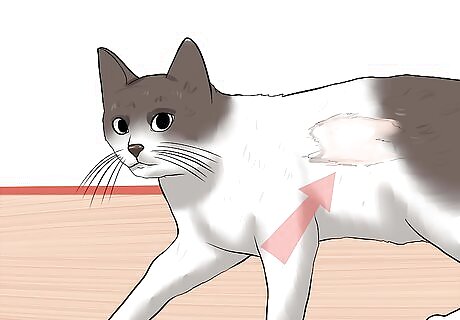
Look for patches of hair loss. There are several reasons that fleas might contribute to your cat's hair loss. Your cat may be irritated by the constant biting and scratches her fur a lot, leading to patches of hair loss. Or, your cat might be allergic to flea saliva which irritates the skin and causes extra scratching. Your cat may be allergic to something other than fleas. If you don't find fleas, but your cat is still constantly scratching, take her to the vet.
Giving Your Cat Preventative Flea Treatment
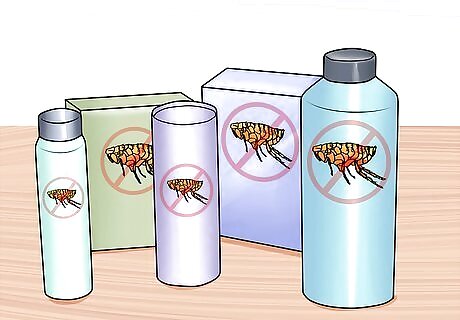
Find a flea treatment. Even if you don't find fleas, you should consider using a product that both protects your cat from fleas and treats current infestations. Modern flea preventatives are safe and extremely effective. Some can be purchased over the counter and others are only available from veterinarians. Choose a product specifically for feline use since some dog products contain ingredients that can be harmful to cats. Check with your veterinarian for help choosing a product that meets your cat's needs.
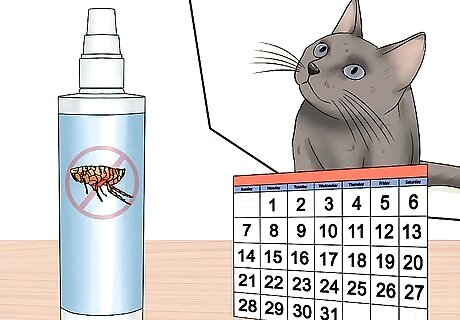
Treat your cat with monthly flea medication. Follow the packaged instructions or your vet's directions when giving the medication. Treatment will protect your cat from future flea problems and will tell you whether it was a flea problem that caused your cat's symptoms. If the problem goes away after treatment, fleas probably contributed to the issue even if you never saw them. Monthly preventative treatments are available orally, as injections, and as topical medications.
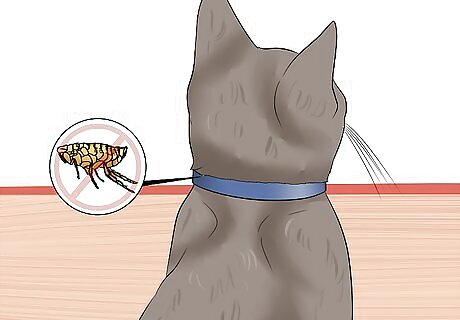
Choose a flea collar that is approved by your vet. There are a variety of flea collars on the market. Some work well, while others don't work at all, and some may be toxic to your cat. Therefore, it's important to talk with your vet before using a flea collar. Consider putting a flea collar in your vacuum bag or canister to kill any fleas that you vacuum up.
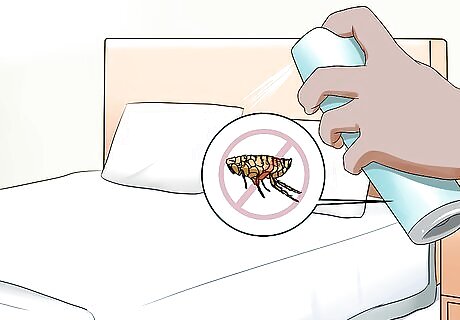
Prevent fleas from infesting your home. Vacuum all the carpets, rugs, and upholstery every day. Be sure to throw away the vacuum bag in an outside dumpster so the fleas can't get back out. You should also wash your pet's bedding in hot water to kill any fleas. If you have a flea infestation that you can't seem to get rid of, you may need to use a household fogger. This releases toxins that kill the fleas and their eggs, but it may be harmful to pets and children. Carefully learn about foggers before using them.


















Comments
0 comment